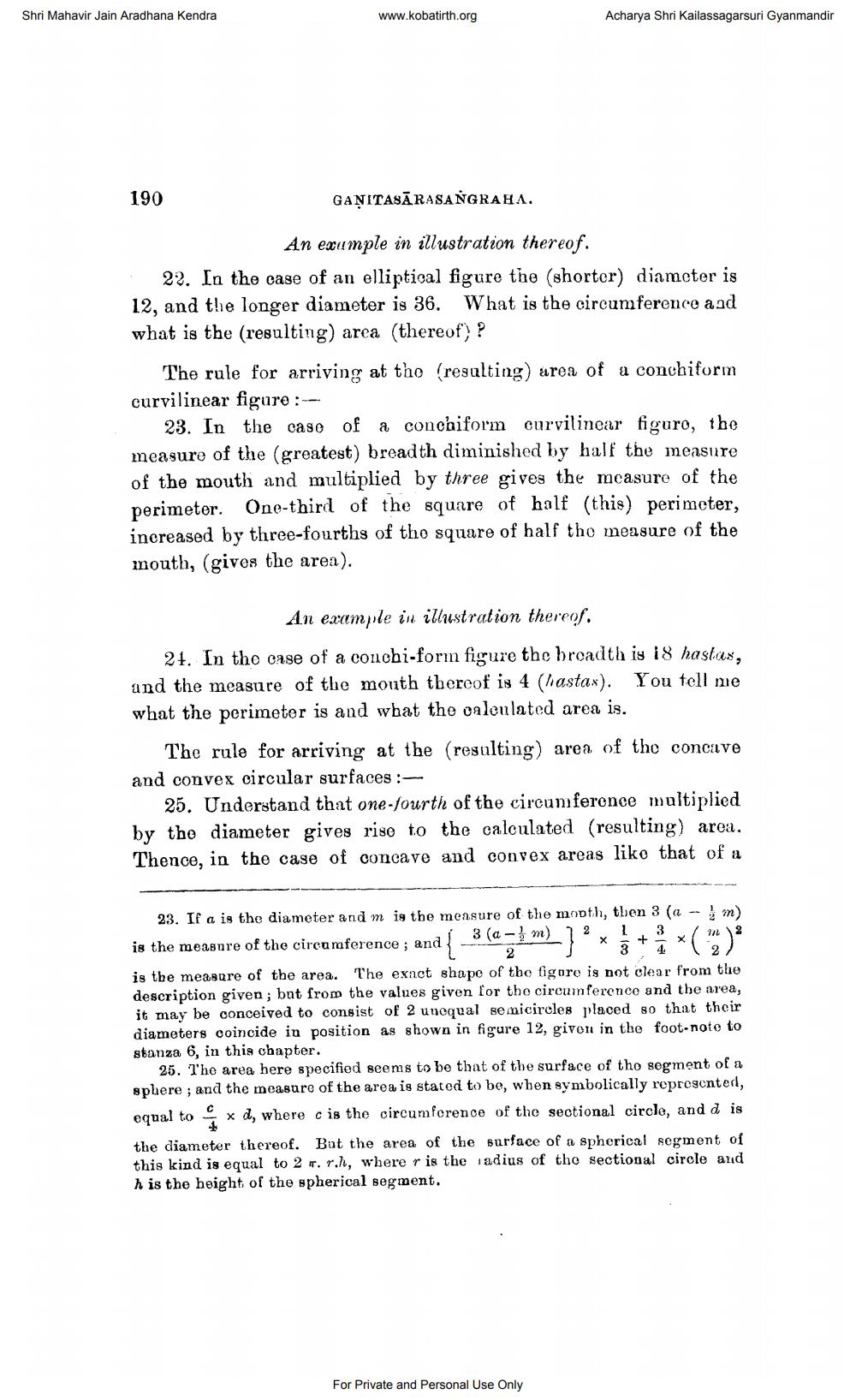________________
Shri Mahavir Jain Aradhana Kendra
www.kobatirth.org
Acharya Shri Kailassagarsuri Gyanmandir
190
GANITASĀRASANGRAHA.
An example in illustration thereof. 22. In the case of an elliptical figure the shorter) diameter is 12, and the longer diameter is 36. What is the circumference and what is the (resulting) area (thereof) ?
The rule for arriving at the resulting) area of a conchiform curvilinear figure :--
23. In the case of a conchiform curvilinear figuro, the measure of the greatest) breadth diminished by half the measure of the mouth and multiplied by three gives the measure of the perimeter. One-third of the square of half (this) perimeter, increased by three-fourths of the square of half the measure of the mouth, (gives the area).
An example in illustration thereof.
24. In the case of a conchi-form figure the breadth is 18 hastas, and the measure of the mouth thereof is 4 (hastax). You tell me what the perimeter is and what the calculated area is.
The rule for arriving at the (resulting) area of the concave and convex circular surfaces :
25. Understand that one-fourth of the circumference multiplied by the diameter gives rise to the calculated (resulting) area. Thence, in the case of concave and convex areas like that of a
23. If a is the diameter and m in the measure of the month, then 3 (a - m) is the measure of the circumference; and ( 3 (
a m) 12x +3x7m)
ence; and {- 2 * 3 +7 (2) is the measure of the area. The exact shape of the figure is not clear from the description given; but from the values given for the circumference and the area, it may be conceived to consist of 2 unequal semicircles placed so that their diameters coincide in position as shown in figure 12, given in the foot-note to stanza 6, in this chapter.
25. The area here specified seems to be that of the surface of tho segment of a sphere, and the measure of the area is stated to be, when symbolically representer, equal to © x d, where c is the circumference of the sectional circle, and d is the diameter thereof. Bat the area of the surface of a spherical segment of this kind is equal to 2 r. r.l, where r is the radius of the sectional circle and h is the height of the spherical segment.
For Private and Personal Use Only




